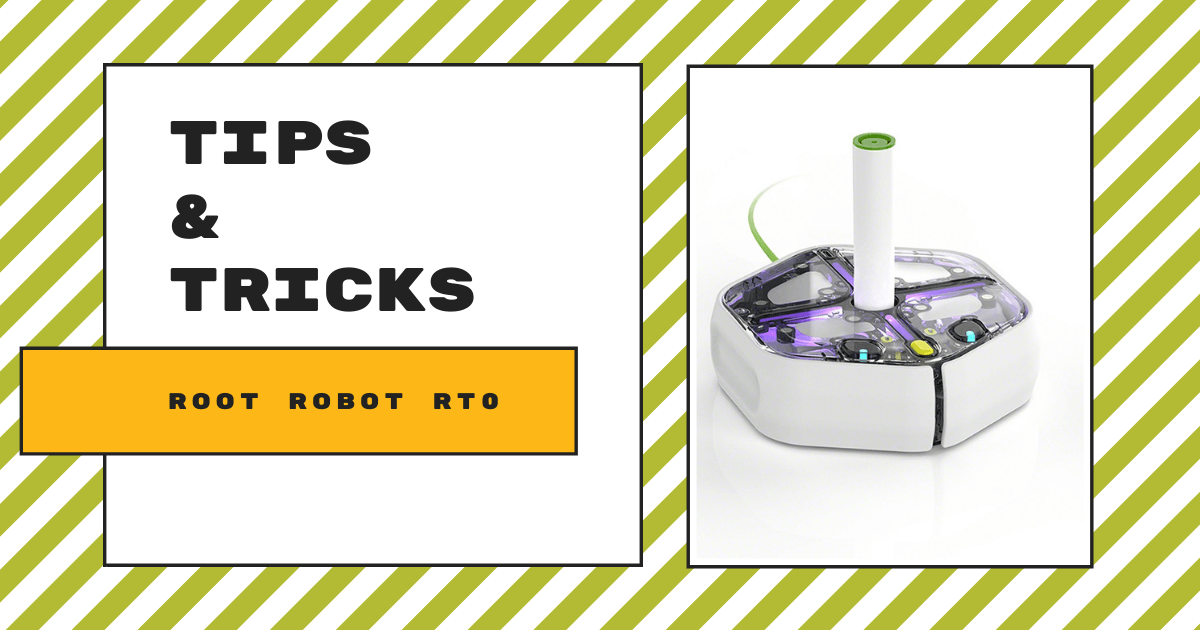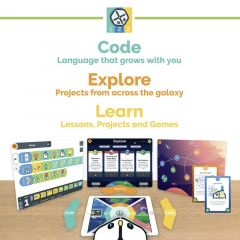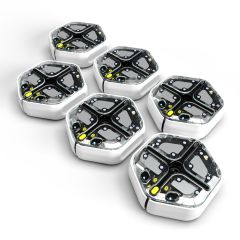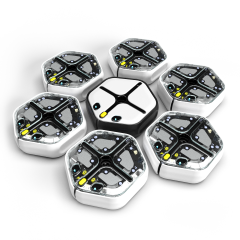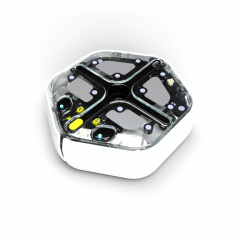If you've explored educational robots at all over the last few years, there's a good chance you are familiar with the Root Robot from iRobot Education. Using this sleek classroom coding robot, students throughout the K-12 grades can develop strong programming skills and take advantage of the Root's incredibly unique features, like its ability to climb a whiteboard. There is also another coding robot in the fold called the Root rt0 (the original model is the rt1). As you might expect, there are a few key differences when it comes to the Root rt0 vs. the rt1. So, we're exploring what those differences are, why they're important for educators to know, and other Tips & Tricks for optimizing computer science instruction with iRobot and Root projects.
When it comes to iRobot programming lessons, it is incredibly easy for any educators to get started. The iRobot Learning Library is home to tons of valuable educational content that's perfect for coding lessons in the classroom. In this library, teachers can easily search for and find projects for that original Root Robot or the Root rt0. On the left of the screen, there's a filter for finding projects for your Root rt0, specifically. They could also choose to filter these coding lesson plans by grade level, academic subject, content type, and language. And, yes, the language options are, in fact, related to the languages we speak—not the different programming languages the Root is compatible with. Of course, we filtered it to show projects for the Root rt0 and there are a few dozen—many of which also work with the original Root model, too.
The Learning Library and Root rt0 features.
Students can use the Root rt0 even without prior coding experiences or experience with the standard Root model. Each project in the Learning Library indicates the ideal age range so educators know what will work best with their students. Most are ideal for elementary children (Grades 1-5), but there are others that don't require any coding experience at all. Students can use the Root rt0 without a screen and, if instructors ever need to try this, there are unplugged coding activities, too. As you might expect, however, the rt0 is most effective when students do have a screen for programming. And, like with the original Root, they can utilize the iRobot Root Coding app to complete those coding projects.
Now that we've covered where to find helpful project guides, let's explore more of what makes the Root rt0 one of the best coding robots for kids. The first thing to know is that, unlike with its predecessor, students should only use the rt0 on flat surfaces. It does not have the same magnetic features and, therefore, it's not able to scale magnetic surfaces and whiteboards. It does, however, have 20 built-in sensors that allow it to monitor and react to many different triggers. Despite all these parts, the robot is super accessible, allowing students to explore robotics in elementary school beginning in the first or second grade. Plus, the iRobot programming tools are super easy to use and, like we said, there are tons of compatible lessons.
Programming with the iRobot Coding app.
The rt0 is compatible with the iRobot Coding app, which students could access on iOS or Android devices. There's also that iRobot Code platform, which kids can use to practice Root Robot programming without needing any physical robot. If you've used the Root Robot in the classroom or explored our other content on it, you may know there are three levels on the iRobot Coding app. It starts with strictly block coding in Level 1. Then, students can progress up to hybrid coding in Level 2 and begin with full text coding in Level 3. They can follow the same trajectory when using the Root rt0 and make sure they're comfortable with all the coding concepts and features before moving to the next level. Whatever skill level they're at, students can utilize the app to maximize their classroom programming projects.
Some things students can do include programming it to drive, draw, react to touch, and play music. They can explore some core coding concepts as well, including events, commands, and logic as they progress through each level. Plus, to ensure true inclusion in the classroom, all the Root rt0 lessons enable children to collaborate and program together. They should begin by pairing the Root rt0 Robot with their devices to establish a Bluetooth connection. From there, they can begin exploring the three levels of coding—starting with the icon-based environment in Level 1.
The different levels for programming the Root rt0.
In Level 1, students can exclusively use graphical blocks to design Root Robot programs. Starting with this foundational approach and breaking coding development down into phases often helps students feel more comfortable more quickly. In Level 1, they can place the drag-and-drop blocks into their program and start developing core logic and coding skills. Also, for this level of iRobot programming, kids won't even need to know how to read since the blocks are icon-based, making it a perfect option for pre-readers. Plus, as with all levels on the iRobot Coding platform, children can also utilize the built-in code converter and see how their code will translate in one of the other two levels—as soon as they're ready.
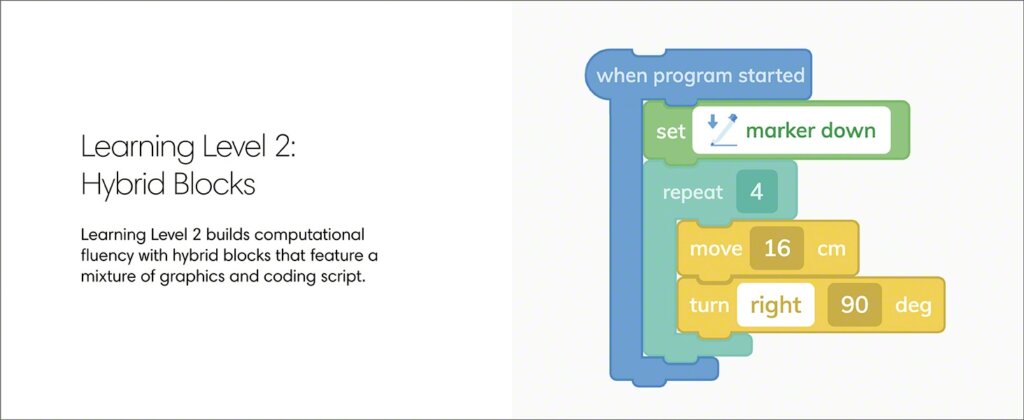
In Level 2, students have the chance to try hybrid coding—a mix of graphical and text-based blocks. This multi-tiered approach to developing coding skills is the next step in the progression and great for students who want to learn to program a robot online. Essentially Level 2 is a mix of Levels 1 and 3, easing children in to more complex Root programming. The mix of graphical displays and coding script helps all students progress and build confidence with the different elements of programming.
More complex coding and transitioning between levels.
Finally, in Level 3 of the iRobot Coding platform, children can try full text coding in the Swift language. This is slightly different from other text-based platforms, however, since these programming elements are all still technically block-based. Normally, when programming in Python, JavaScript, or various other text-based languages, students would type each line of code themselves. In order to keep things simple, however, the text blocks in the iRobot Coding platform are, in fact, blocks—they just display text code so that students don't have to type it themselves. This helps them build on their existing knowledge and connect this new language to programs they've built in the past. They'll also learn structure and syntax that's part of more in-depth and professional coding languages.
Students can even jump between levels and try the Root SimBot if they don't have their actual robot with them. Also, the Root rt0 is compatible with the most popular Root accessories, including their Root Brick Top for adding LEGO structures and some markers, which fit into its centralized slot. When incorporating markers in these projects, students can easily program their robot to draw out a picture or a message. All they have to do is be strategic in how they design these programs. This ensures that their iRobot drawing experience results in their Root moving around to create a logical design.
Root rt0 sensors and features.
For more on the technical side, the Root rt0 weighs under three pounds and it runs on lithium ion batteries. Both the Root Lite Class Pack and Root Combo Bundle come with enough charging cables for each robot. They'll also include a set of vinyl cling sheets, the fold-out whiteboard grids (perfect for drawing), dry erase markers, dry erase cloths, a 1-year premium content subscription, and a printable Root Level 1 Curriculum Guide. Children can connect their Root rt0 robot to their device using either Wi-Fi or Bluetooth. The Root's Bluetooth technology has a range of 30 meters or more. Most importantly, the robot is compatible with iOS and Android devices with up-to-date operating systems.
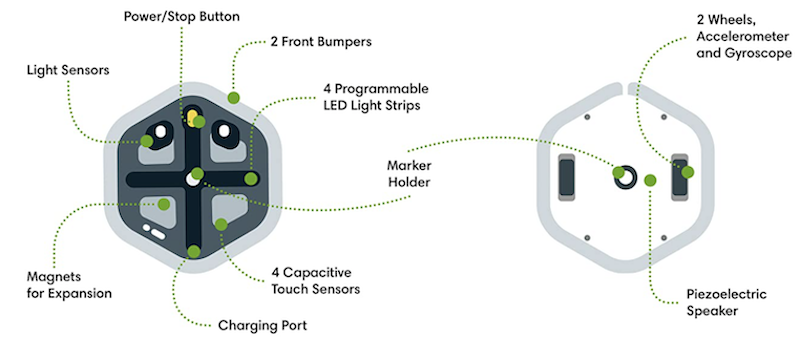
When updating any Root Robots, you'll use its Bluetooth capabilities. These updates help ensure the robot is functioning well, including the use of all its sensors. Speaking of those sensors, the Root rt0 features four capacitive touch zones that are found on its top side, two front bumpers, two light-sensing eyes, two wheel encoders, a power button (on the nose), a 3D gyroscope, a 3D accelerometer, and a battery power monitor. It also has two drive motors, four multicolored LED lights, a piezoelectric speaker, and the marker lift and drop device. When programming with the Root rt0, children can use an iOS, Android, Windows, macOS, or Chrome OS device. They'll have access to code blocks in each environment that allow them to incorporate and control all of these features.
How to code and draw.
Unlike some other classroom robots today, there's no assembly required to use the Root rt0. It's incredibly similar to the original Root Robot and, as such, it is quite straightforward for both teachers and students to figure out from the beginning. Whether they're programming the rt0 with a computer or their mobile device, there are several routes students could choose. For many, this begins with simply programming their robot to drive and make turns. The rt0 can drive forwards, backwards, and in circles, allowing children to use the code blocks to control its movements. Another option is to have the Root respond to its environment using the sensors in its front bumper. In this case, when it encounters obstacles, it'll bounce off and recalculate.
Also, turning the Root rt0 into a drawing bot is a piece of cake. Students can find the programming blocks within the coding platform and program their bot to raise and lower a marker as it drives around, designing creative pictures, messages, or artwork in the process. Kids could also use their bot's touch sensing ability to trigger actions when they touch that zone on its surface, program the robot to light up or flash, program it to perform specific actions based on the light levels it detects, play music, and get it to respond to voice commands. Yes, there's lots of opportunities for STEAM learning when integrating the rt0 in the classroom and adding the iRobot Coding platform to the fold truly empowers students to explore and create.
We hope this helps you get a better understanding of teaching coding with iRobot's Root rt0. If you have any other questions about this coding solution or other classroom robots, reach out to us at anytime. To learn more about the iRobot product line or to request a quote, visit our store. You can find the Root rt0 packs below, too! For more on STEM and CS education, be sure to follow us on X and Instagram.



